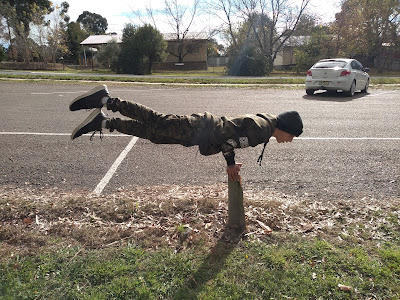Years ago when I first started to grow carnivorous plants I heard about Utricularia, the bladderworts.
Bladderworts are a genus of carnivorous plants that can be roughly broken into two groups, aquatic bladderworts (which live in water), and terrestrial bladderworts (which live on land). There are also epiphytic ones, and semi aquatic ones that live in the riparian zone, some aquatic ones that are free floating, and other aquatic ones that need to be anchored to the sediment, but to keep thinks simple I try to think of two groups.
The traps of Utricularia are the most fascinating and complex of all carnivorous plants. They are more intricate and faster moving than Venus Flytraps. Ironically the traps are on their roots (technically stems) so you tend not to see them work or to be able to feed them easily as they are under the soil level. You can watch the traps of the aquatic ones, and some of the larger trapped aquatic ones make a popping noise if you lift them out of water, but watching the traps of terrestrial ones is a little more difficult. Terrestrial Utricularia also tend to have rather tiny traps, which makes them even harder to watch.
When I first growing carnivorous plants I had a book on carnivorous plants with a description of Utricularia sandersonii accompanied by one out of focus photo. The description said words to the effect of: "the simplest to grow and most beautiful of terrestrial Utricularia". I had never grown any Utricularia at that time so the next time I was ordering carnivorous plants I included one of these.
 |
| Utricularia sandersonii typical flowers |
My plant arrived in the post, and was a small 2cm cube of peatmoss with a few tiny green leaves. I planted it and waited. It didn't take too long before my little pot was brimming with flowers. This truly was an easy to grow carnivorous plant, and it had unique little flowers that I liked.
I grew this for years, and loved it. Now that I am growing more carnivorous plants again I looked around for anyone selling Utricularia sandersonii. Strangely enough nowhere listed it for sale.
I find this odd because this is incredibly simple to grow, it is not weedy, it flowers freely for most of the year, and it looks nice.
 |
| Small Utricularia sandersonii flowering |
To the best of my knowledge there are two clones in Australia. The typical one which I have, and a 'blue' flowered clone.
The 'blue' one looks much the same as the typical one, except the ears are shorter and the flower is wider. The photos I have seen don't look all that blue. I am told that the blue clone can be reluctant to flower under less than ideal conditions. I have never grown it, or seen it in real life, so can't really comment.
My typical clone flowers like mad, and does not stop just because the conditions are less than ideal, so I am more than happy with it. It slows down flowering over winter, but that is ok. I am really glad that I was able to track down this species again.
My plant is still flowering in winter, and is slowly growing and filling out its pot. In spring if I have any extra plant I will offer them through my for sale page. They handle postage really well 'bare rooted' (with minimal peatmoss). I may also be keen to swap for other carnivorous plants if you have anything that I am after.
















































